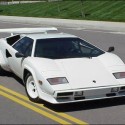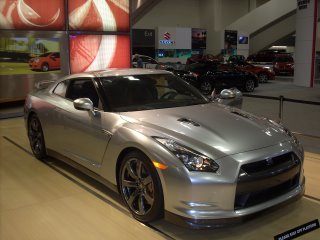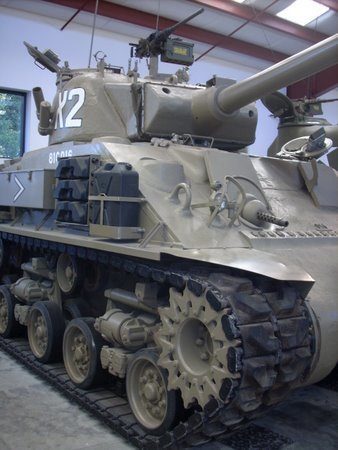A Brand Portrait of the Raging Bull that is Lamborghini

With two stunning, purebred bulls in our paddock, and with a deposit on the brand new Aventador — to know a bit more about Lamborghini is a piece of knowledge we as auto enthusiasts might take for granted. Although 48 years of existence in the marketplace is no feat to be ashamed of, Lamborghini’s run so far is shorter than its other exotic rivals. In fact, Lambo’s founding father, Ferruccio Lamborghini, birthed the automotive sector of his label in a response to the sports car offerings of the time. An industrialist from his early years, Lamborghini went into business building tractors out of leftover military hardware from the war effort and by the mid-1950s, Lamborghini’s tractor company became one of the largest agricultural equipment manufacturers in Italy alongside his successful heating and air conditioning operation. What does all this mean? It means Lamborghini’s pockets had grown to a healthy breadth, giving him leverage to not only start an automotive operation but also to invest in various luxury and sports cars (including Ferraris) for inspiration. As a result he found that enthusiasts deserved a sports grand tourer that didn’t tear up your ear drums or induce soreness he thought was too prevalent in Ferrari’s repurposed track cars. With that vision in mind, Ferruccio Lamborghini would use his wealth of knowledge (pun intended) to make this dream come true, not only did he know he would make enthusiasts’ dreams come true for generations to come.
So without further ado let’s take a quick journey through the evolution of the raging bull by looking at the most stunning and impactful models. Birthed from the yearning for a high-powered, purely road-ready V12 tourer, the 350GTV was a tumultuous project whose warm critical response ultimately outweighed the heartache and profit losses it entailed. The 350GTV was designed and built in only four months, in time for an October unveiling at the 1963 Turin Motor Show…with an engine bay full of bricks. See, Ferruccio was a bit of a perfectionist and until the 1964 Geneva Auto Show, the 350GTV was a car that Mr. Lamborghini was not so enthused over. Regardless, production began shortly after Geneva, and by the end of the year, cars had been built for 13 customers; Lamborghini sold each car at a loss in order to keep prices competitive with Ferrari’s. The 350GT remained in production for a further two years, with a total of 120 cars sold.
Comfort and road manners would soon give way to true performance accolades with the introduction of the famed Miura. In actuality, the Miura began as a clandestine prototype, a car that had racing pedigree in a company that was entirely against motorsport. Again, not completely satisfied with the heart of his new creation, the Miura had a soft debut with another locked engine bay full of dead weight. What is most important here, though, is where this empty engine bay was situated: in the middle. In fact, Miura’s layout and styling would become the standard for mid-engine two-seat high-performance sports cars, a trend that continues today.
With some added stimulants from the Miura, Lamborghini was on its way to becoming a brand revolving completely around high-powered, track-ready sports cars. Produced from 1974 to 1988, the Countach elevated the exotic intrigue of the Lamborghini brand and undoubtedly introduced the angular design scheme that stays strong to this day. Although world politics (aka oil) plagued the brand’s fervent passion with mileage restrictions and financial woes, the Countach, then, would become the most popular and successful bull in history. In light of oil and gas crises of the time, might we add that the Countach got 6 mpg in the city. Maybe that number is more a shock today considering gas prices, but damn, 6 mpg. Anyway, although the financial sacrifices were undoubtedly painful, the undertaking from Chrysler that these problems induced would ultimately help Lamborghini to have a more substantial, less disoriented presence in the U.S.
The company’s U.S. presence had previously consisted of loosely affiliated and disorganized private dealer network; Chrysler established an efficient franchise with full service and spare parts support. This would be the essential backbone to the stunning Diablo that became the benchmark of what we consider an exotic automobile. Known as the fastest car in production when it was released in 1990, and with brisk sales, Lambo turned profits that increased past the $1 million mark in 1991; only to be back in the red a few years later. Despite its $239,000 sticker proving a bit too steep for many American consumers, the Diablo was Lamborghini’s poster child through the 90’s and would give way to the modern models we see and drive most today.
An effort to expand lineup and increase profitability came in the form of German ownership under Audi. Under Audi, the first new Lamborghini in more than a decade, the Murcielago (known internally as Project L140), represented the rebirth of the marque. And coupled with the fresh, V-10 powered Gallardo that we so passionately keep in our collection, Lamborghini made the new millennium its time to shine. Today we find an exciting, but not dilutive, expansion of the Lamborghini brand with the prospect of a sedan offering (ie the Estoque) and a brand new, absolutely ferocious flagship, the Aventador. So although we’ve left out the register of astonishing performance figures and engineering technicalities that are so dear to the hearts of exotic auto enthusiasts, taking a look behind closed doors reminds us of Lamborghini’s tumultuous past, a past that will produce an even stronger kick from the bull in the future.
Rent a Lamborghini in the San Francisco Bay Area Today
Image references: http://www.cartype.com http://www.lamborghiniblog.






